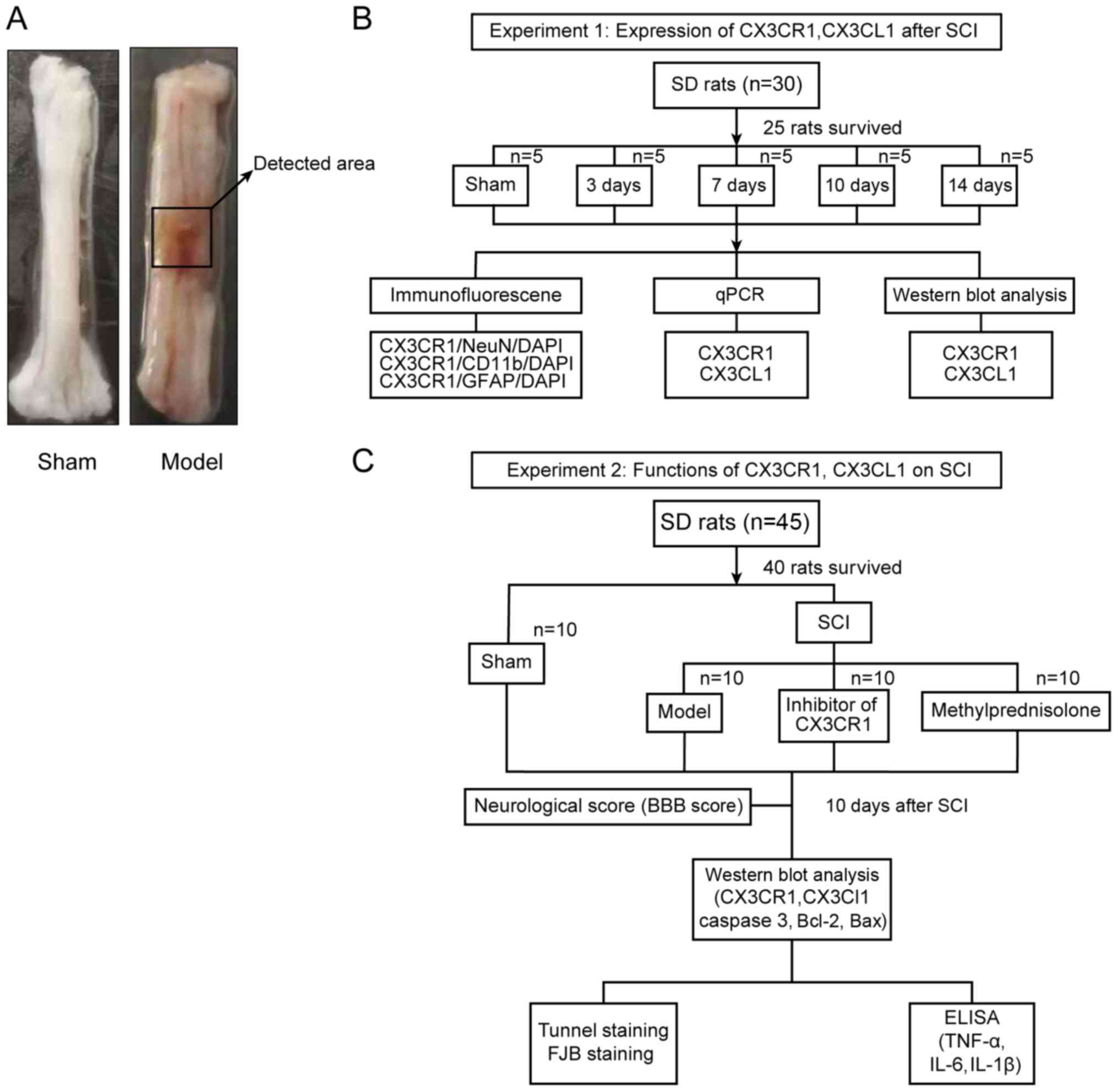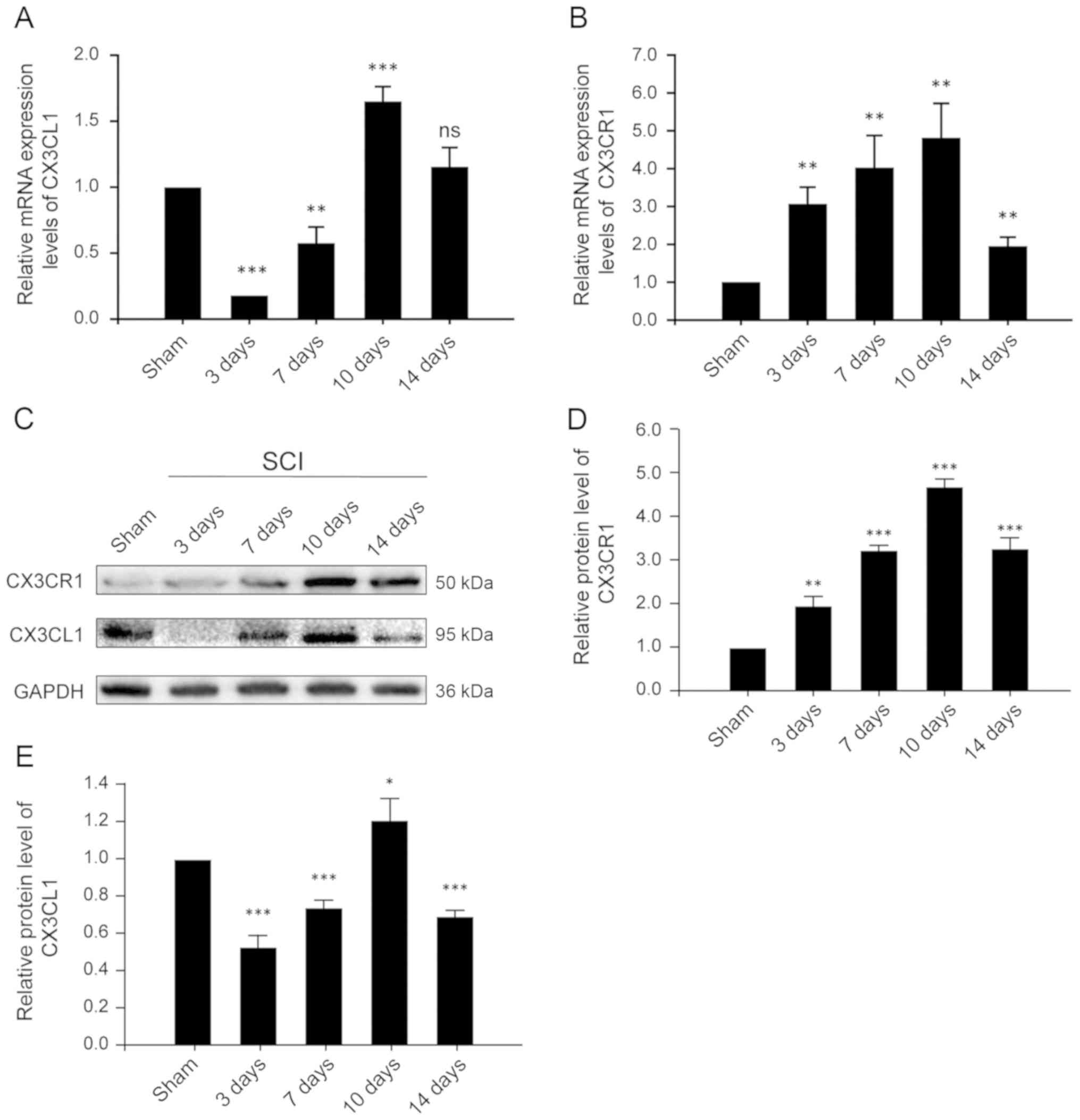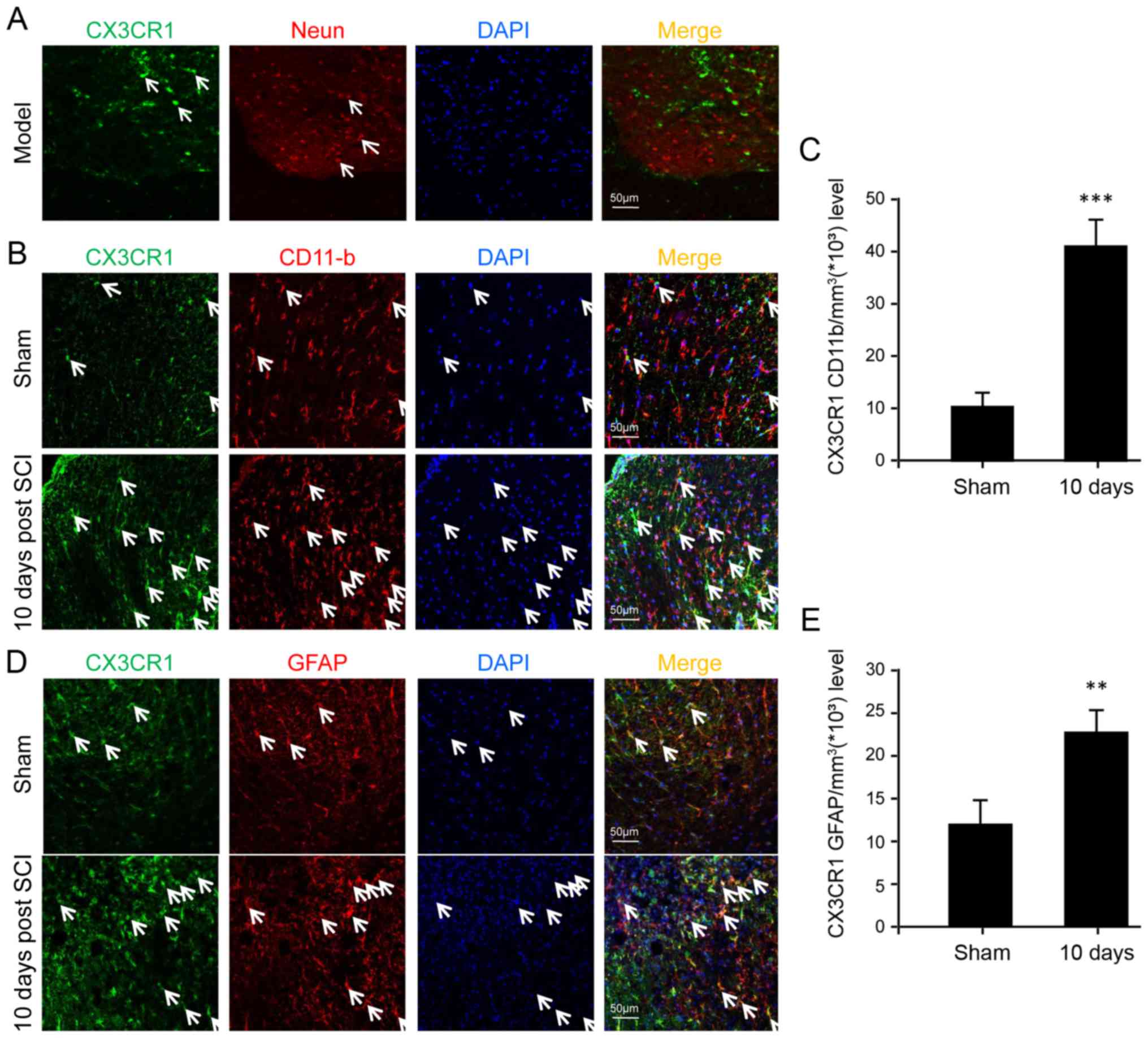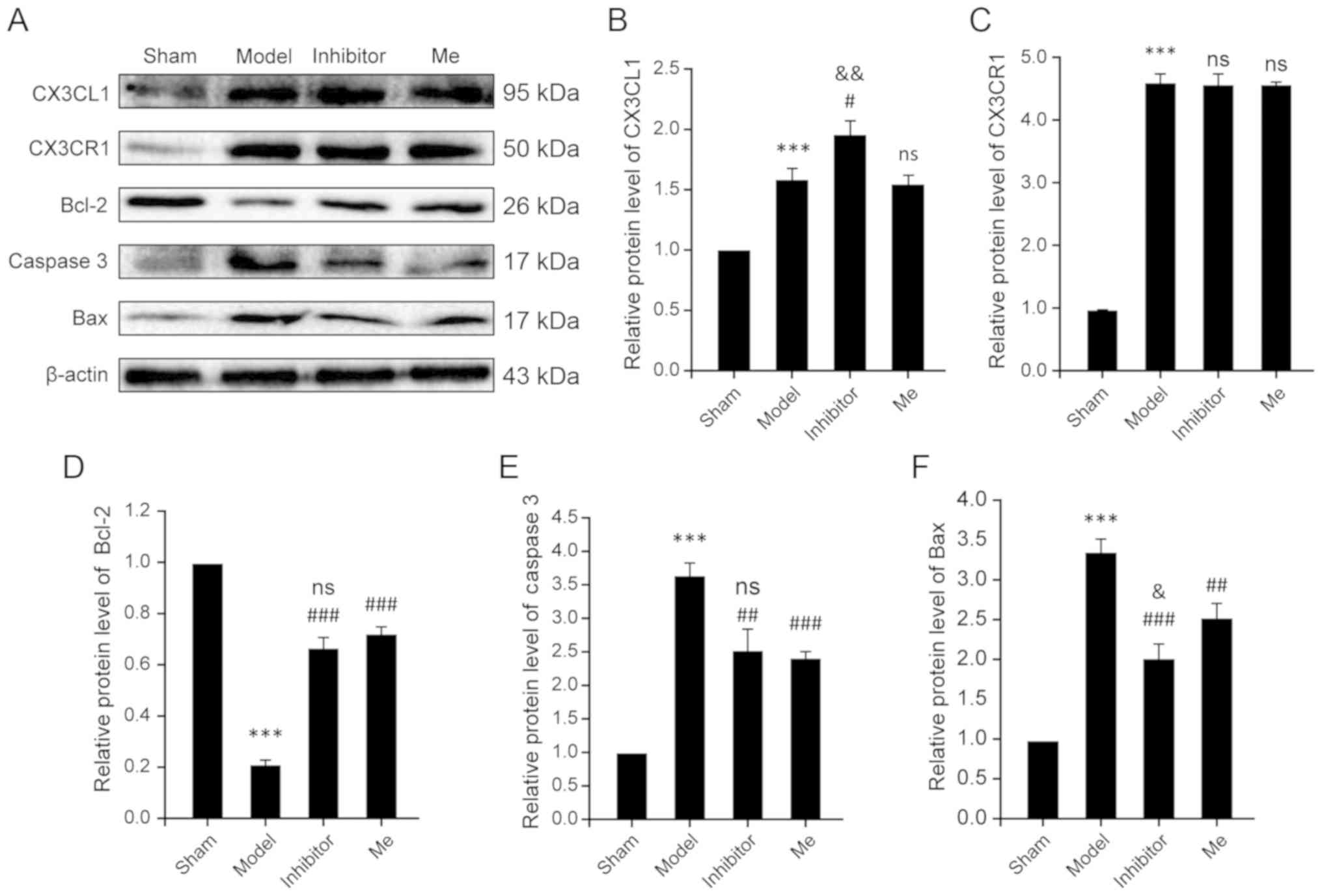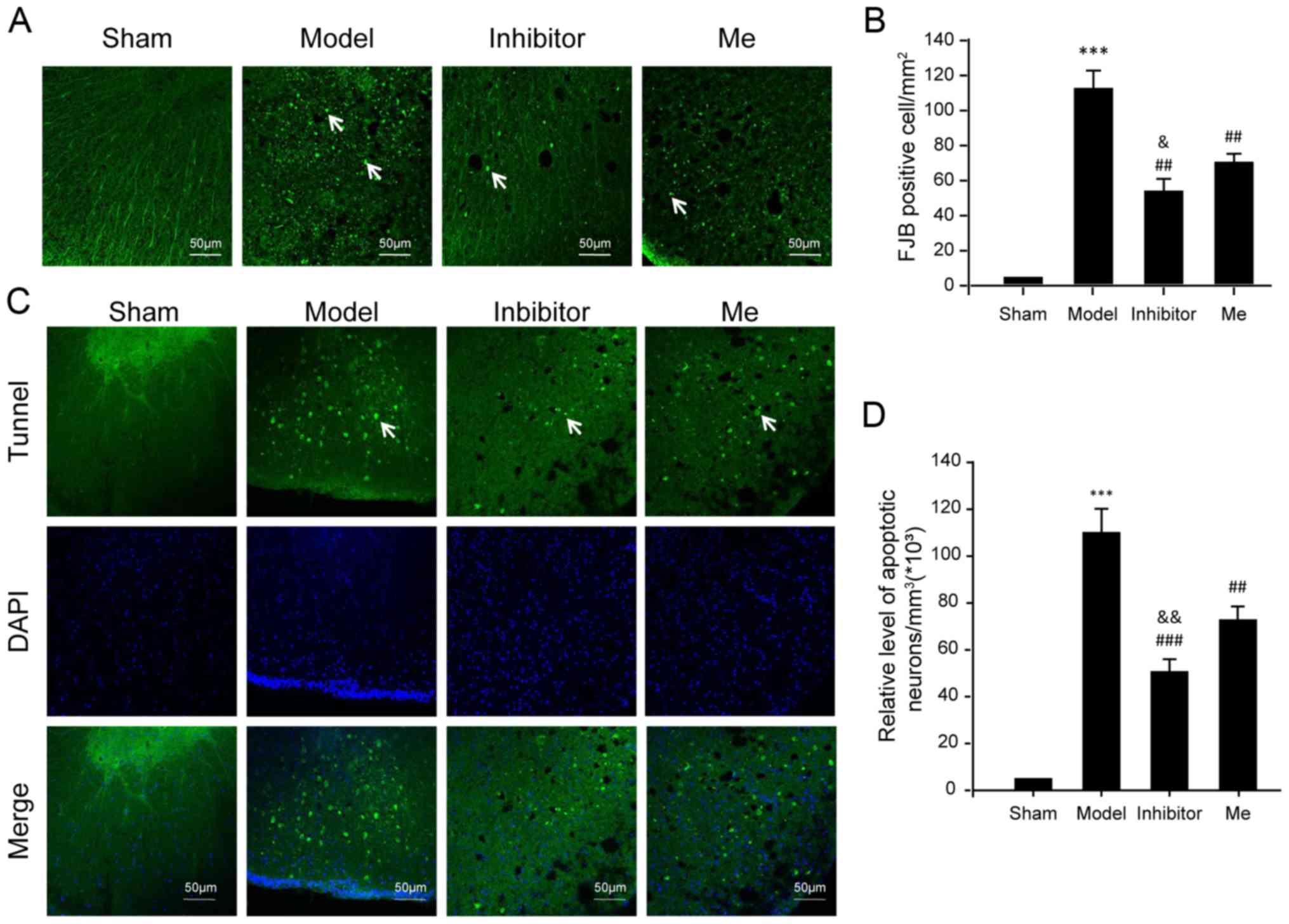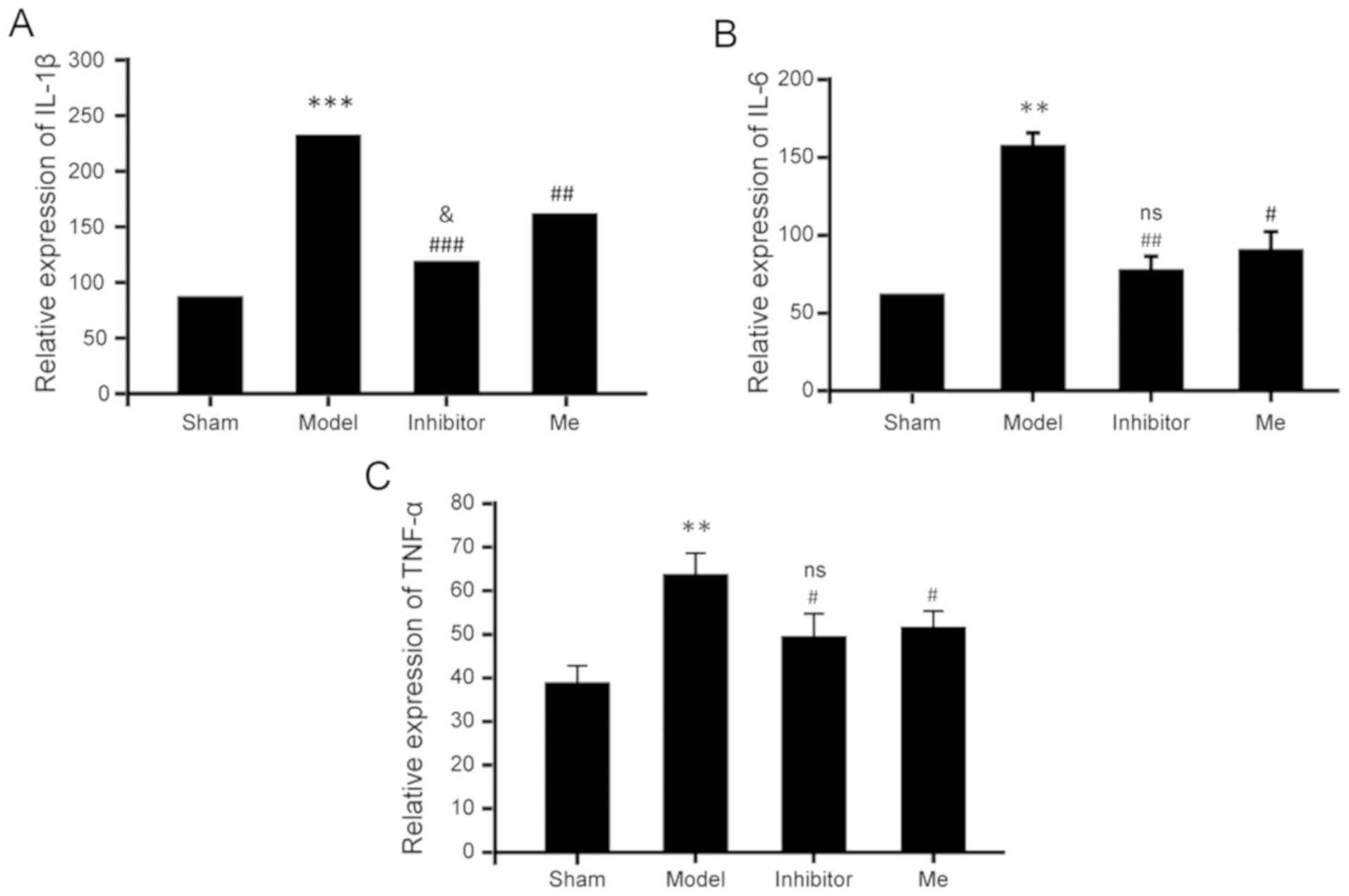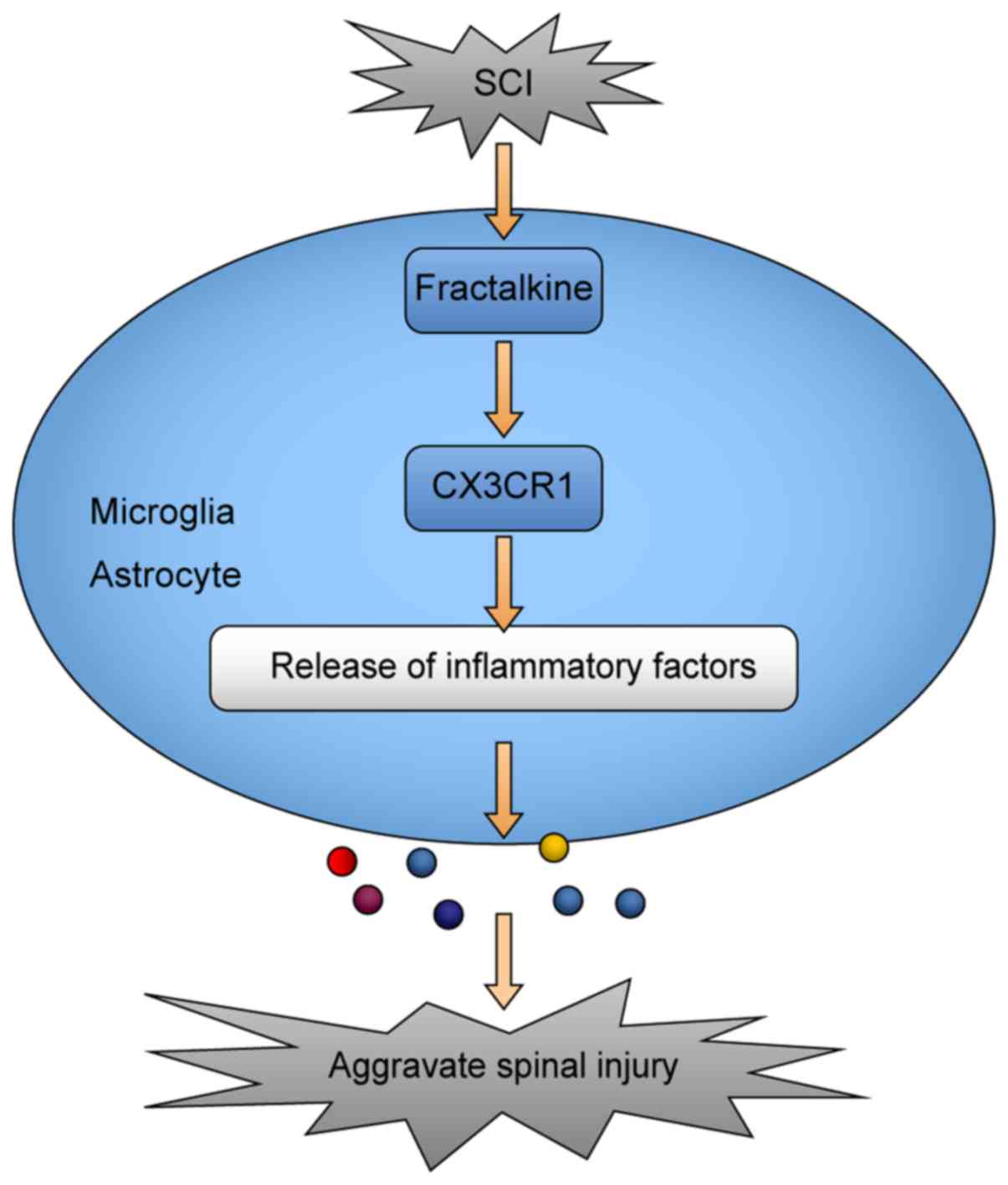|
1
|
Hyder AA, Wunderlich CA, Puvanachandra P,
Gururaj G and Kobusingye OC: The impact of traumatic brain
injuries: A global perspective. NeuroRehabilitation. 22:341–353.
2007. View Article : Google Scholar : PubMed/NCBI
|
|
2
|
Lee BB, Cripps RA, Fitzharris M and Wing
PC: The global map for traumatic spinal cord injury epidemiology:
Update 2011, global incidence rate. Spinal Cord. 52:110–116. 2014.
View Article : Google Scholar
|
|
3
|
Fitzharris M, Cripps RA and Lee BB:
Estimating the global incidence of traumatic spinal cord injury.
Spinal Cord. 52:117–122. 2014. View Article : Google Scholar
|
|
4
|
Oertel M, Kelly DF, McArthur D, Boscardin
WJ, Glenn TC, Lee JH, Gravori T, Obukhov D, McBride DQ and Martin
NA: Progressive hemorrhage after head trauma: Predictors and
consequences of the evolving injury. J Neurosurg. 96:109–116. 2002.
View Article : Google Scholar : PubMed/NCBI
|
|
5
|
Chen H, Guo Y, Chen SW, Wang G, Cao HL,
Chen J, Gu Y and Tian HL: Progressive epidural hematoma in patients
with head trauma: Incidence, outcome and risk factors. Emerg Med
Int. 2012:134905. 2012. View Article : Google Scholar
|
|
6
|
Cuenca PJ, Tulley EB, Devita D and Stone
A: Delayed traumatic spinal epidural hematoma with spontaneous
resolution of symptoms. J Emerg Med. 27:37–41. 2004. View Article : Google Scholar : PubMed/NCBI
|
|
7
|
Khuyagbaatar B, Kim K and Kim YH: Effect
of bone fragment impact velocity on biomechanical parameters
related to spinal cord injury: A finite element study. J Biomech.
47:2820–2825. 2014. View Article : Google Scholar : PubMed/NCBI
|
|
8
|
Persson C, McLure S, Summers J and Hall R:
The effect of bone fragment size and cerebrospinal fluid on spinal
cord deformation during trauma: An ex vivo study. J Neurosurg
Spine. 10:315–323. 2009. View Article : Google Scholar : PubMed/NCBI
|
|
9
|
Wilcox RK, Boerger TO, Allen DJ, Barton
DC, Limb D, Dickson RA and Hall RM: A dynamic study of
thoracolumbar burst fractures. J Bone Joint Surg Am. 85:2184–2189.
2003. View Article : Google Scholar : PubMed/NCBI
|
|
10
|
Scholten AC, Haagsma JA, Panneman MJM, Van
Beeck EF and Suzanne P: Traumatic brain injury in the Netherlands:
Incidence, costs and disability-adjusted life years. PLoS One.
9:e1109052014. View Article : Google Scholar : PubMed/NCBI
|
|
11
|
Garcia-Altes A, Pérez K, Novoa A, Suelves
JM, Bernabeu M, Vidal J, Arrufat V, Santamarina-Rubio E, Ferrando
J, Cogollos M, et al: Spinal cord injury and traumatic brain
injury: A cost-of-illness study. Neuroepidemiology. 39:103–108.
2012. View Article : Google Scholar : PubMed/NCBI
|
|
12
|
Guha A: Management of traumatic brain
injury: Some current evidence and applications. Postgrad Med J.
80:6502004. View Article : Google Scholar : PubMed/NCBI
|
|
13
|
Borgens RB and Liu-Snyder P: Understanding
secondary injury. Q Rev Biol. 87:89–127. 2012. View Article : Google Scholar : PubMed/NCBI
|
|
14
|
Oyinbo CA: Secondary injury mechanisms in
traumatic spinal cord injury: A nugget of this multiply cascade.
Acta Neurobiol Exp (Wars). 71:281–299. 2011.
|
|
15
|
Maas AIR, Nino S and Ross B: Moderate and
severe traumatic brain injury in adults. Lancet Neurol. 7:728–741.
2008. View Article : Google Scholar : PubMed/NCBI
|
|
16
|
Silva NA, Sousa N, Rui LR and Salgado AJ:
From basics to clinical: A comprehensive review on spinal cord
injury. Prog Neurobiol. 114:25–57. 2014. View Article : Google Scholar
|
|
17
|
Bazarian JJ, Cernak I, Noblehaeusslein LJ,
Potolicchio S and Temkin N: Long-term neurologic outcomes after
traumatic brain injury. J Head Trauma Rehabil. 24:4392009.
View Article : Google Scholar : PubMed/NCBI
|
|
18
|
Huang YH, Yang TM, Lin WC, Ho JT, Lee TC,
Chen WF, Rau CS and Wang HC: The prognosis of acute blunt cervical
spinal cord injury. J Trauma. 66:1441–1445. 2009. View Article : Google Scholar : PubMed/NCBI
|
|
19
|
Kawano H, Kimura-Kuroda J, Komuta Y,
Yoshioka N, Li HP, Kawamura K, Li Y and Raisman G: Role of the
lesion scar in the response to damage and repair of the central
nervous system. Cell Tissue Res. 349:169–180. 2012. View Article : Google Scholar : PubMed/NCBI
|
|
20
|
Ziebell JM and Morganti-Kossmann MC:
Involvement of pro- and anti-inflammatory cytokines and chemokines
in the pathophysiology of traumatic brain injury.
Neurotherapeutics. 7:22–30. 2010. View Article : Google Scholar : PubMed/NCBI
|
|
21
|
Sandhir R, Puri V, Klein RM and Berman NE:
Differential expression of cytokines and chemokines during
secondary neuron death following brain injury in old and young
mice. Neurosci Lett. 369:28–32. 2004. View Article : Google Scholar : PubMed/NCBI
|
|
22
|
de Haas AH, van Weering HR, de Jong EK,
Boddeke HW and Biber KP: Neuronal chemokines: Versatile messengers
in central nervous system cell interaction. Mol Neurobiol.
36:137–151. 2007. View Article : Google Scholar : PubMed/NCBI
|
|
23
|
Rostène W, Dansereau MA, Godefroy D, Van
Steenwinckel J, Reaux-Le Goazigo A, Melik-Parsadaniantz S, Apartis
E, Hunot S, Beaudet N and Sarret P: Neurochemokines: A menage a
trois providing new insights on the functions of chemokines in the
central nervous system. J Neurochem. 118:680–694. 2011. View Article : Google Scholar : PubMed/NCBI
|
|
24
|
Estes ML and Kimberley MAA: Alterations in
immune cells and mediators in the brain: It’s not always
neuroinflammation! Brain Pathol. 24:623–630. 2014. View Article : Google Scholar : PubMed/NCBI
|
|
25
|
Morganti-Kossmann MC, Satgunaseelan L, Bye
N and Kossmann T: Modulation of immune response by head injury.
Injury. 38:1392–1400. 2007. View Article : Google Scholar : PubMed/NCBI
|
|
26
|
Bowes AL and Yip PK: Modulating
inflammatory cell responses to spinal cord injury: All in good
time. J Neurotrauma. 31:1753–1766. 2014. View Article : Google Scholar : PubMed/NCBI
|
|
27
|
Huhtinen A, Hongisto V, Laiho A,
Löyttyniemi E, Pijnenburg D and Scheinin M: Gene expression
profiles and signaling mechanisms in
α2B-adrenoceptor-evoked proliferation of vascular smooth
muscle cells. Bmc Syst Biol. 11:652017. View Article : Google Scholar
|
|
28
|
Paolicelli RC, Bisht K and Tremblay MÈ:
Fractalkine regulation of microglial physiology and consequences on
the brain and behavior. Front Cell Neurosci. 8:1292014. View Article : Google Scholar : PubMed/NCBI
|
|
29
|
Roseti C, Fucile S, Lauro C, Martinello K,
Bertollini C, Esposito V, Mascia A, Catalano M, Aronica E, Limatola
C and Palma E: Fractalkine/CX3CL1 modulates GABA, currents in human
temporal lobe epilepsy. Epilepsia. 54:1834–1844. 2013. View Article : Google Scholar : PubMed/NCBI
|
|
30
|
Lee HW, Lee K, Kim DG, Yang H and Nam DH:
Facilitating tailored therapeutic strategies for glioblastoma
through an orthotopic patient-derived xenograft platform. Histol
Histopathol. 31:269–283. 2016.
|
|
31
|
Marchesi F, Locatelli M, Solinas G, Erreni
M, Allavena P and Mantovani A: Role of CX3CR1/CX3CL1 axis in
primary and secondary involvement of the nervous system by cancer.
J Neuroimmunol. 224:39–44. 2010. View Article : Google Scholar : PubMed/NCBI
|
|
32
|
Poniatowski ŁA, Wojdasiewicz P, Krawczyk
M, Szukiewicz D, Gasik R, Kubaszewski Ł and Kurkowska-Jastrzębska
I: Analysis of the role of CX3CL1 (Fractalkine) and its receptor
CX3CR1 in traumatic brain and spinal cord injury: Insight into
recent advances in actions of neurochemokine agents. Mol Neurobiol.
54:2167–2188. 2017. View Article : Google Scholar :
|
|
33
|
de Pablos RM, Herrera AJ, Espinosa-Oliva
AM, Sarmiento M, Muñoz MF, Machado A and Venero JL: Chronic stress
enhances microglia activation and exacerbates death of nigral
dopaminergic neurons under conditions of inflammation. J
Neuroinflammation. 11:342014. View Article : Google Scholar : PubMed/NCBI
|
|
34
|
Gwak YS, Kang J, Unabia GC and Hulsebosch
CE: Spatial and temporal activation of spinal glial cells: Role of
gliopathy in central neuropathic pain following spinal cord injury
in rats. Exp Neurol. 234:362–372. 2012. View Article : Google Scholar :
|
|
35
|
Zhang L, Zhang J and You Z: Switching of
the microglial activation phenotype is a possible treatment for
depression disorder. Front Cell Neurosci. 16:3062018. View Article : Google Scholar
|
|
36
|
Joshi M and Fehlings MG: Development and
characterization of a novel, graded model of clip compressive
spinal cord injury in the mouse: Part 1. Clip design, behavioral
outcomes, and histopathology. J Neurotrauma. 19:175–190. 2002.
View Article : Google Scholar : PubMed/NCBI
|
|
37
|
Liu YZ, Wang C, Wang Q, Lin YZ, Ge YS, Li
DM and Mao GS: Role of fractalkine/CX3CR1 signaling pathway in the
recovery of neurological function after early ischemic stroke in a
rat model. Life Sci. 184:87–94. 2017. View Article : Google Scholar : PubMed/NCBI
|
|
38
|
Fehlings MG, Wilson JR, Harrop JS, Kwon
BK, Tetreault LA, Arnold PM, Singh JM, Hawryluk G and Dettori JR:
Efficacy and safety of methylprednisolone sodium succinate in acute
spinal cord injury: A systematic review. Global Spine J. 7(Suppl
3): S116–S137. 2017. View Article : Google Scholar
|
|
39
|
Livak KJ and Schmittgen TD: Analysis of
relative gene expression data using real-time quantitative PCR and
the 2(−Delta Delta C(T)) method. Methods. 25:402–408. 2001.
View Article : Google Scholar
|
|
40
|
Cederblad L, Rosengren B, Ryberg E and
Hermansson NO: AZD8797 is an allosteric non-competitive modulator
of the human CX3CR1 receptor. Biochem J. 473:641–649. 2016.
View Article : Google Scholar :
|
|
41
|
Stavros A and Demetrios S: Chemokines and
atherosclerosis: Focus on the CX3CL1/CX3CR1 pathway. Acta Pharmacol
Sin. 34:1251–1256. 2013. View Article : Google Scholar
|
|
42
|
Berkhemer OA, Fransen PS, Beumer D, van
den Berg LA, Lingsma HF, Yoo AJ, Schonewille WJ, Vos JA, Nederkoorn
PJ, Wermer MJ, et al: A randomizedtrial ofintraarterial treatment
for acute ischemicstroke. N Engl J Med. 372:11–20. 2015. View Article : Google Scholar
|
|
43
|
Campbell BC, Mitchell PJ, Kleinig TJ,
Dewey HM, Leonid C, Nawaf Y, Bernard Y, Dowling RJ, Parsons MW,
Oxley TJ, et al: Endovascular therapy for ischemic stroke with
perfusion-imaging selection. N Engl J Med. 372:1009–1018. 2015.
View Article : Google Scholar : PubMed/NCBI
|
|
44
|
Goyal M, Demchuk AM, Menon BK, Eesa M,
Rempel JL, Thornton J, Roy D, Jovin TG, Willinsky RA, Sapkota BL,
et al: Randomized assessment of rapid endovascular treatment of
ischemic stroke. N Engl J Med. 372:1019–1030. 2015. View Article : Google Scholar : PubMed/NCBI
|
|
45
|
Sofroniew MV: Molecular dissection of
reactive astrogliosis and glial scar formation. Trends Neurosci.
32:638–647. 2009. View Article : Google Scholar : PubMed/NCBI
|
|
46
|
Hara M, Kobayakawa K, Ohkawa Y, Kumamaru
H, Yokota K, Saito T, Kijima K, Yoshizaki S, Harimaya K, Nakashima
Y and Okada S: Interaction of reactive astrocytes with type I
collagen induces astrocytic scar formation through the
integrin-N-cadherin pathway after spinal cord injury. Nat Med.
23:818–828. 2017. View Article : Google Scholar : PubMed/NCBI
|
|
47
|
Chen Y, Won SJ, Xu Y and Swanson RA:
Targeting microglial activation in stroke therapy: Pharmacological
tools and gender effects. Curr Med Chem. 21:2146–2155. 2014.
View Article : Google Scholar : PubMed/NCBI
|
|
48
|
Stoll G, Jander S and Schroeter M:
Inflammation and glial responses in ischemic brain lesions. Prog
Neurobiol. 56:149–171. 1998. View Article : Google Scholar : PubMed/NCBI
|
|
49
|
Sungho L, Varvel NH, Konerth ME, Guixiang
X, Cardona AE, Ransohoff RM and Lamb BT: CX3CR1 deficiency alters
microglial activation and reduces beta-amyloid deposition in two
Alzheimer’s disease mouse models. Am J Pathol. 177:2549–2562. 2010.
View Article : Google Scholar
|
|
50
|
Zhu W, Acosta C, MacNeil B, Cortes C,
Intrater H, Gong Y and Namaka M: Elevated expression of fractalkine
(CX3CL1) and fractalkine receptor (CX3CR1) in the dorsal root
ganglia and spinal cord in experimental autoimmune
encephalomyelitis: Implications in multiple sclerosis-induced
neuropathic pain. Biomed Res Int. 2013:480702. 2013. View Article : Google Scholar
|
|
51
|
Limatola C and Ransohoff RM: Modulating
neurotoxicity through CX3CL1/CX3CR1 signaling. Front Cell Neurosci.
8:2292014. View Article : Google Scholar : PubMed/NCBI
|
|
52
|
Bracken MB, Shepard MJ, Holford TR,
Leo-Summers L, Aldrich EF, Fazl M, Fehlings M, Herr DL, Hitchon PW,
Marshall LF, et al: Administration of methylprednisolone for 24 or
48 h or tirilazad mesylate for 48 h in the treatment of acute
spinal cord injury. Results of the Third National Acute Spinal Cord
Injury Randomized Controlled Trial National Acute Spinal Cord
Injury Study. JAMA. 277:1597–1604. 1997. View Article : Google Scholar : PubMed/NCBI
|
|
53
|
Bracken MB, Shepard MJ, Holford TR,
Leo-Summers L, Aldrich EF, Fazl M, Fehlings MG, Herr DL, Hitchon
PW, Marshall LF, et al: Methylpredniso-lone or tirilazad mesylate
administration after acute spinal cordinjury: 1-year follow up.
Results of the third National Acute Spinal Cord Injury randomized
controlled trial. J Neurosurg. 89:699–706. 1998. View Article : Google Scholar : PubMed/NCBI
|
|
54
|
Biber K, Owens T and Boddeke E: What is
microglia neurotoxicity (Not)? Glia. 62:841–854. 2014. View Article : Google Scholar : PubMed/NCBI
|
|
55
|
Kasama T, Wakabayashi K, Sato M, Takahashi
R and Isozaki T: Relevance of the CX3CL1/fractalkine-CX3CR1 pathway
in vasculitis and vasculopathy. Transl Res. 155:20–26. 2010.
View Article : Google Scholar
|















